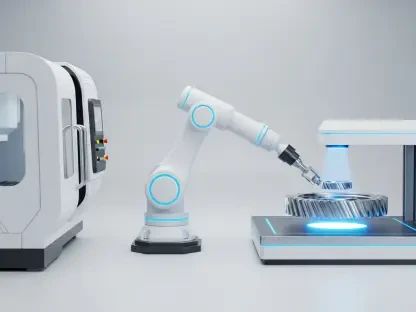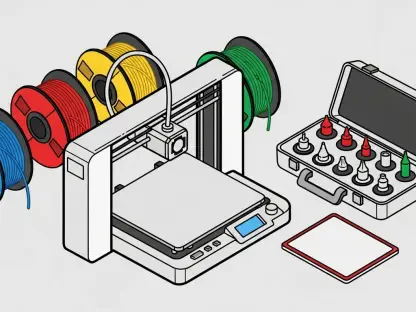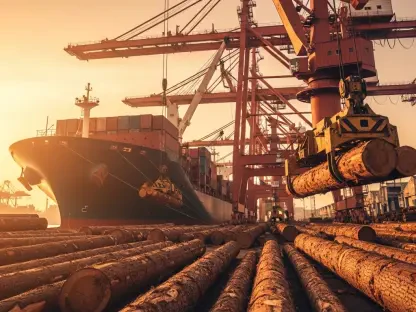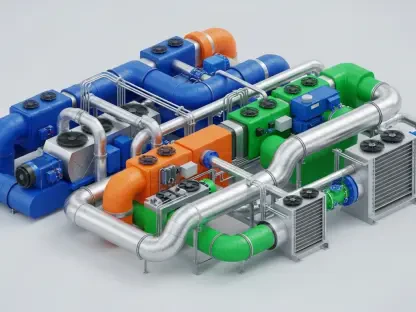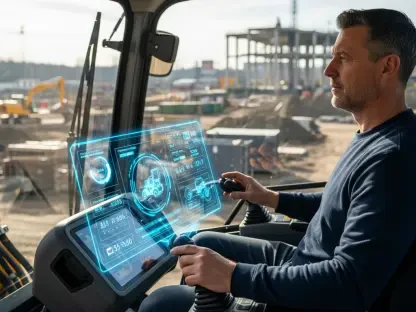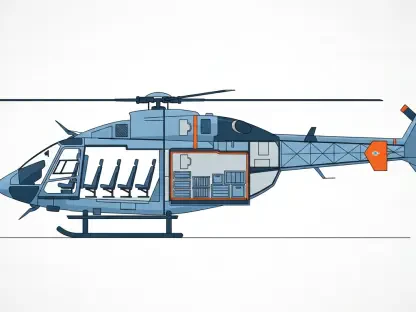In today’s rapidly evolving logistics landscape, the infusion of advanced autonomous robots has heralded a new era of efficiency and capability. These sophisticated machines, particularly autonomous mobile robots (AMRs) and mobile manipulators (MoMas), are transforming how businesses operate, offering solutions to age-old challenges such as labor shortages and the need for enhanced precision and speed. As these robots become integral to modern supply chains, the question arises: Are they reshaping logistics permanently? The demand for automated systems continues to rise, driven by both technological improvements and the pressing demands of global logistics, making an exploration into the evolving role of these robots timely and crucial.
Technological Advancements in AMRs
Recent advancements in AMR technology have propelled them to the forefront of logistics and warehousing sectors. Equipped with sophisticated sensors such as LiDAR, 3D cameras, and proximity sensors, along with AI and SLAM algorithms, AMRs navigate complex environments efficiently. These enhancements allow them to operate without traditional fixed infrastructures like magnetic tapes, making their deployment more flexible and cost-effective. A prominent example is ABB’s AI-driven AMR, which handles payloads up to 1500 kg, showcasing the capability to manage heavy and complex tasks autonomously. Continental’s development of ultracompact transport robots illustrates a shift towards creating more agile, space-efficient solutions, suitable for confined spaces in warehouses and manufacturing floors.
The impact of these innovations is evident in the improved operational efficiency seen across industries, with AMRs performing monotonous tasks like material transport, order picking, and sorting with enhanced speed and accuracy. Such automation not only reduces human error but also significantly boosts throughput. Operations like those at Amazon’s fulfillment centers exemplify how the integration of AMRs can drastically cut order fulfillment expenses. Their role extends beyond transportation, as they provide real-time inventory management solutions. AMRs’ data accuracy capabilities minimize inventory discrepancies, optimizing stock levels and ensuring supply chain fluidity.
Addressing Labor Shortages and Operational Flexibility
Amid persistent labor shortages, especially in roles that are physically demanding, AMRs offer a strategic solution by automating repetitive and strenuous tasks. This automation allows human workers to focus on more complex, engaging activities, thereby maximizing workforce potential and maintaining operational continuity. The utilization of AMRs aids in alleviating workforce burdens, offering a robust response to dynamic market conditions. The flexibility they afford is equally critical. Unlike traditional automation systems requiring extensive infrastructure, AMRs can be easily scaled according to demand shifts, enabling businesses to adapt to changing requirements efficiently.
This adaptability makes AMRs particularly beneficial for industries facing fluctuating operational needs. They can be rapidly deployed and scaled without the need for significant facility modifications. Additionally, their ability to integrate seamlessly into existing workflows ensures that organizations can benefit from automation without halting ongoing operations. This feature, combined with their cost-effectiveness, presents a compelling case for their adoption across various sectors, effectively bridging the gap created by workforce shortages and evolving industry demands.
The Emergence of Mobile Manipulators
Building on the capabilities of AMRs, mobile manipulators prove even more versatile by combining mobility with intricate manipulation tasks. These robots, equipped with a robotic arm mounted on an autonomous base, perform tasks previously reliant on human dexterity. This capability is transforming industries by automating routine tasks, freeing human workers for more strategic roles. MoMas are increasingly utilized in processes requiring precise handling, such as picking or assembling components, showcasing their adaptability in dynamic environments.
Their ability to transition between different workstations and perform diverse tasks is particularly valuable in logistics and beyond. For instance, they can facilitate product assembly by delivering components and using their robotic arms to place them accurately on production lines. As labor costs rise and workforce shortages persist, MoMas provide an efficient alternative, streamlining operations and ensuring continuity in the supply chain. Their applications extend to various sectors, including manufacturing, healthcare, agriculture, and service industries, each benefiting uniquely from the enhanced capabilities and efficiency offered by these advanced robotic systems.
Broader Implications and Industry Impact
The influence of AMRs and MoMas extends beyond mere process automation; they are setting new standards for efficiency and adaptability across industries. In manufacturing, these robots assist with tasks such as assembly, quality inspection, and precision welding, enhancing the versatility of production lines. The healthcare sector benefits from their ability to handle logistics involving medical supplies, meal delivery, and patient care, thereby allowing medical staff to focus on critical tasks. Meanwhile, in agriculture, these robots aid in precision planting and harvesting, adapting to dynamic environmental conditions to maximize crop yield.
In service industries, MoMas enhance operations in areas like retail, hospitality, and cleaning, demonstrating the potential of automation in daily tasks. The continuous innovation within this field is marked by developments such as Kuka’s cleanroom-certified robots for electronics manufacturing and Continental’s ultracompact solutions. These technological advancements signify not just transitional solutions but foundational changes shaping industrial efficiency and human-robot collaboration, setting the stage for future innovations and applications.
Envisioning the Future of Logistics Automation
In the fast-paced world of logistics, the integration of advanced autonomous robots marks a significant shift towards greater efficiency and capability. Sophisticated machines like autonomous mobile robots (AMRs) and mobile manipulators (MoMas) are revolutionizing business operations by addressing longstanding issues such as labor shortages while simultaneously enhancing precision and speed. As these technologies become deeply entrenched in contemporary supply chains, the question arises: Are they changing the logistics landscape for good? The rising demand for automated systems is propelled by continuous technological advancement and the urgent needs of global logistics networks. As companies seek to optimize their operations, these robots not only offer solutions to enduring challenges but also pave the way for the future of supply chain management. This growing reliance on robots calls for a timely examination of their evolving role in reshaping logistics. Consequently, understanding their impact becomes indispensable.



